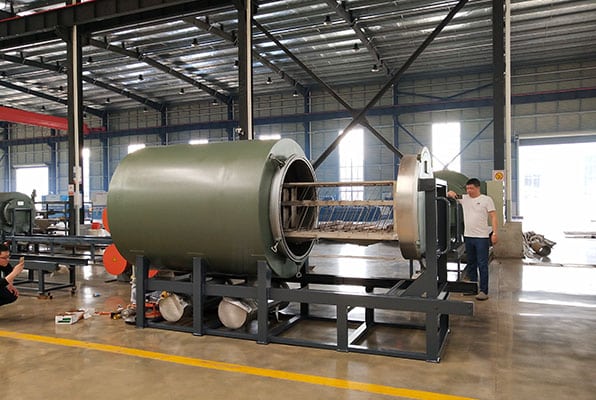Introduction: Industry Pain Points in Polymer Cleaning
In industries such as plastic injection molding, 3D printing, medical devices, and automotive components, cleaning polymers (e.g., PC, PEEK, nylon, PTFE) has always been a challenge. Traditional cleaning methods (e.g., chemical solvent immersion, ultrasonic cleaning, high-pressure water jetting) are widely used but suffer from several issues:
- Chemical Residue: Solvent cleaning may cause surface corrosion or secondary contamination.
- Material Damage: High-pressure water or ultrasonic cleaning can lead to deformation or micro-cracks in precision components.
- Environmental Pressure: Restrictions on volatile organic compound (VOC) emissions and high wastewater treatment costs.
As industries increasingly demand high cleanliness, low damage, and green manufacturing, vacuum cleaning ovens are emerging as the new standard solution for polymer cleaning.
How Vacuum Cleaning Ovens Work
Vacuum cleaning ovens utilize pyrolysis + vacuum environment to efficiently remove surface and internal contaminants from polymers:
- Vacuum Environment (Low-Oxygen/Oxygen-Free): Prevents polymer oxidation at high temperatures, minimizing material damage.
- High-Temperature Pyrolysis (300~600°C): Decomposes oils, release agents, powder residues, and other organic contaminants into gases, which are then evacuated by a vacuum pump.
- Inert Gas Protection (Optional): Further safeguards sensitive materials (e.g., PEEK) from performance degradation.
Compared to traditional methods, the core advantages of vacuum cleaning ovens include:
✅ No Chemical Residue: Relies solely on physical pyrolysis, eliminating the need for solvents.
✅ Low Damage: The vacuum environment prevents high-temperature oxidation, preserving material integrity.
✅ Eco-Friendly Compliance: Zero VOC emissions and reduced wastewater treatment costs.
Industry Application Cases
1. Injection Mold Cleaning: Improved Yield, Reduced Downtime
An automotive parts manufacturer used a vacuum cleaning oven to clean PA66 + glass fiber injection molds, achieving the following compared to traditional solvent cleaning:
- Contaminant Removal Rate increased from 85% to 99.9%.
- Mold Lifespan extended by 30% due to the absence of chemical corrosion or high-pressure water damage.
- Cleaning Cycle shortened from 8 hours to 2 hours, significantly boosting productivity.
2. 3D-Printed Nylon Parts: Powder Removal with Precision Retention
Nylon (PA12) parts from 3D printing often retain unsintered powder, which is difficult to remove completely with conventional methods. An additive manufacturing company adopted a vacuum cleaning oven, achieving:
- Powder Removal Rate of 99.5%, eliminating post-assembly friction issues.
- Improved Dimensional Stability, with no micro-deformation caused by ultrasonic cleaning.
3. Medical-Grade PEEK Components: Meeting Biocompatibility Requirements
The medical industry imposes stringent cleanliness standards on polymers (e.g., PEEK). A medical device manufacturer using a vacuum cleaning oven achieved:
- ISO 13485 Certification compliance, with no solvent residue risks.
- Surface Cleanliness meeting implant-grade standards, eliminating secondary processing.
Future Trends: Smart Technology and Industry Standardization
- AI Dynamic Control: Real-time monitoring of temperature and vacuum levels via sensors to optimize cleaning parameters.
- Waste Heat Recovery Systems: Further reduce energy consumption and enhance sustainability.
- Industry Standardization: The EU and China are promoting standardized applications of vacuum cleaning ovens in polymer-related fields.
Conclusion
As high-end manufacturing, medical, and new energy industries demand increasingly stringent material performance, vacuum cleaning ovens are redefining polymer cleaning standards with their “residue-free, low-damage, zero-pollution” advantages. For companies pursuing high yield, cost efficiency, and sustainable production, investing in vacuum cleaning technology has become imperative.
Are you evaluating polymer cleaning solutions? Share your thoughts on how vacuum cleaning ovens could benefit your industry!

